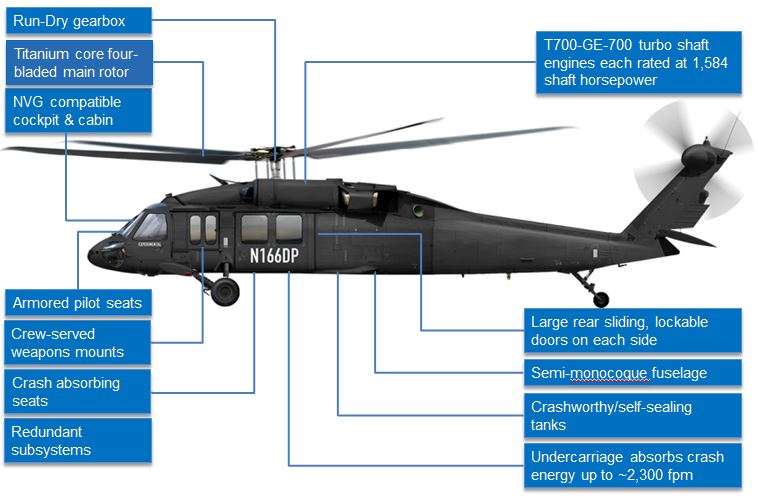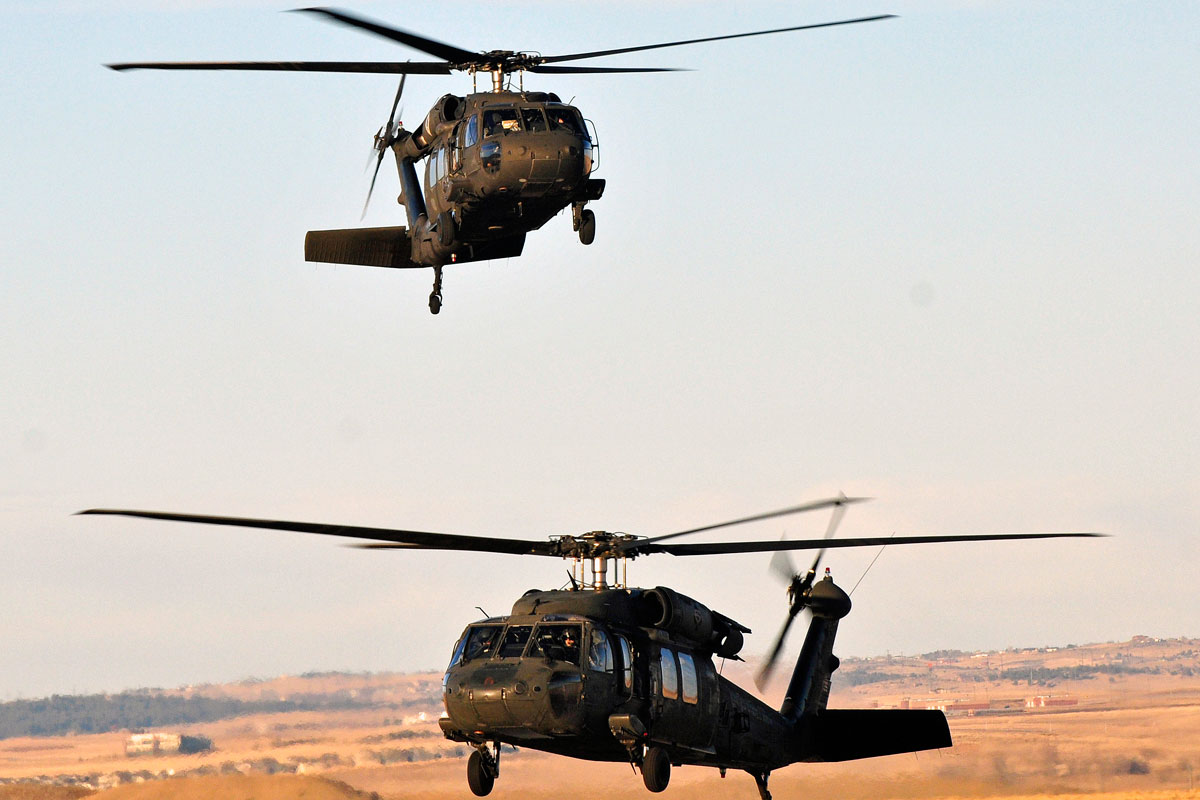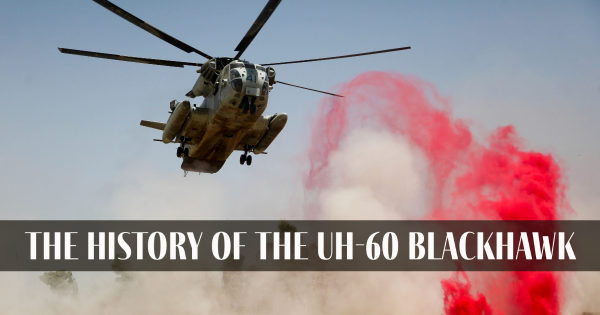Security First: Vital Steps in UH 60 Helicopter Maintenance
Security First: Vital Steps in UH 60 Helicopter Maintenance
Blog Article
Comprehending the Mechanics and Design Behind Uh 60 Helicopters
The UH-60 helicopter, frequently recognized as the Black Hawk, stands as a peak of modern-day rotorcraft modern technology, personifying a blend of robust design and intricate mechanics. As we peel back the layers of the UH-60's design, a globe of intricate systems and meticulous engineering comes to light.
History of UH-60 Helicopters
The background of UH-60 helicopters traces back to the late 1970s when the USA Military sought a sophisticated and versatile utility helicopter to change its aging fleet. In action to this demand, the Sikorsky Airplane Firm established the UH-60 Black Hawk helicopter. Introduced in 1979, the UH-60 quickly came to be a staple in army operations due to its remarkable abilities.
The UH-60 was developed to master a selection of objectives, including army transport, clinical emptying, electronic war, and special procedures. Its capability to adapt to various functions made it a valuable property to the U.S. uh 60. Army and various other military pressures around the world
Throughout the years, the UH-60 platform has actually gone through a number of upgrades and variants to improve its efficiency and keep rate with progressing mission needs. These helicopters have seen extensive service in problems such as the Gulf War, Afghanistan, and Iraq, showcasing their integrity and flexibility in varied operational settings. The UH-60's rich background is a testament to its enduring heritage as a leading energy helicopter.

Engine and Power Solutions
Using sophisticated propulsion modern technology, UH-60 helicopters are equipped with advanced engine and power systems to ensure optimal efficiency and integrity in an array of functional circumstances. The UH-60, generally called the Black Hawk, is powered by two General Electric T700-GE-701D engines, each with the ability of delivering up to 1,940 shaft horsepower. These turboshaft engines provide the necessary drive for the helicopter to accomplish its missions effectively, including troop transport, clinical discharge, and combat assistance.

Blades System and The Rules Of Aerodynamics
Just how do the blades system and aerodynamics of UH-60 helicopters contribute to their operational performance and trip capabilities? The rotor system of the UH-60 helicopter plays an essential role in giving lift and propulsion.
The rules of aerodynamics also play a key duty in the performance of UH-60 helicopters. The streamlined body and rotor blade design lower drag, enabling the helicopter to achieve greater speeds and far better fuel efficiency. The wind resistant style of the UH-60 additionally adds to its ability to run in diverse ecological conditions, consisting of high elevations and hot temperature levels.
Avionics and Trip Control Solution

In its elaborate control with the rotor system and aerodynamics of UH-60 helicopters, the avionics and flight control systems create a crucial network of innovations forming the airplane's functional capabilities. In the UH-60, these systems include digital screens, interaction radios, General practitioner navigation, weather condition radar, and auto-pilot systems.
The trip control systems of the UH-60 are accountable for translating the pilot's inputs into the suitable modifications to the blades system, making certain stable flight and ability to move. These systems are composed of hydraulic actuators, servos, and computers that interact to control the main and tail blades, in addition to various other trip control surface areas. By exactly handling the helicopter's flight dynamics, these systems allow you can look here pilots to carry out a large variety of objectives, from transport and search-and-rescue to fight operations, with accuracy and self-confidence.
Duty and Applications in Aeronautics
Avionics systems in UH-60 helicopters include a range of electronic systems that aid in navigation, communication, monitoring, and managing different aircraft features. These systems consist of digital screens, auto-pilot systems, communication radios, GPS navigation equipment, and weather condition radar. In addition, these systems include safety features such a fantastic read as autopilot settings, surface recognition warning systems, and stability augmentation systems to boost the overall safety and security and functional capacities of the UH-60 helicopters in different goals, including troop transport, clinical evacuation, search and rescue, and airborne firefighting.
Conclusion
In verdict, the UH-60 helicopter is a flexible airplane with an abundant history and advanced engineering. Its engine and power systems, rotor system, aerodynamics, avionics, and flight control systems all function with each other to make it a effective and dependable machine.
In its detailed sychronisation with the blades system and aerodynamics of UH-60 helicopters, the avionics and trip control systems create a crucial network of technologies forming the airplane's functional abilities.The flight control systems of the UH-60 are responsible for converting the pilot's inputs right into the proper adjustments to the click here now rotor system, making certain secure trip and maneuverability. Avionics systems in UH-60 helicopters include a range of digital systems that help in navigating, communication, monitoring, and controlling various aircraft functions. In addition, these systems integrate safety attributes such as auto-pilot modes, terrain understanding alerting systems, and security enhancement systems to enhance the overall safety and security and operational capabilities of the UH-60 helicopters in numerous objectives, including army transport, clinical emptying, search and rescue, and aerial firefighting.
Its engine and power systems, rotor system, aerodynamics, avionics, and flight control systems all function together to make it a reliable and reliable equipment.
Report this page